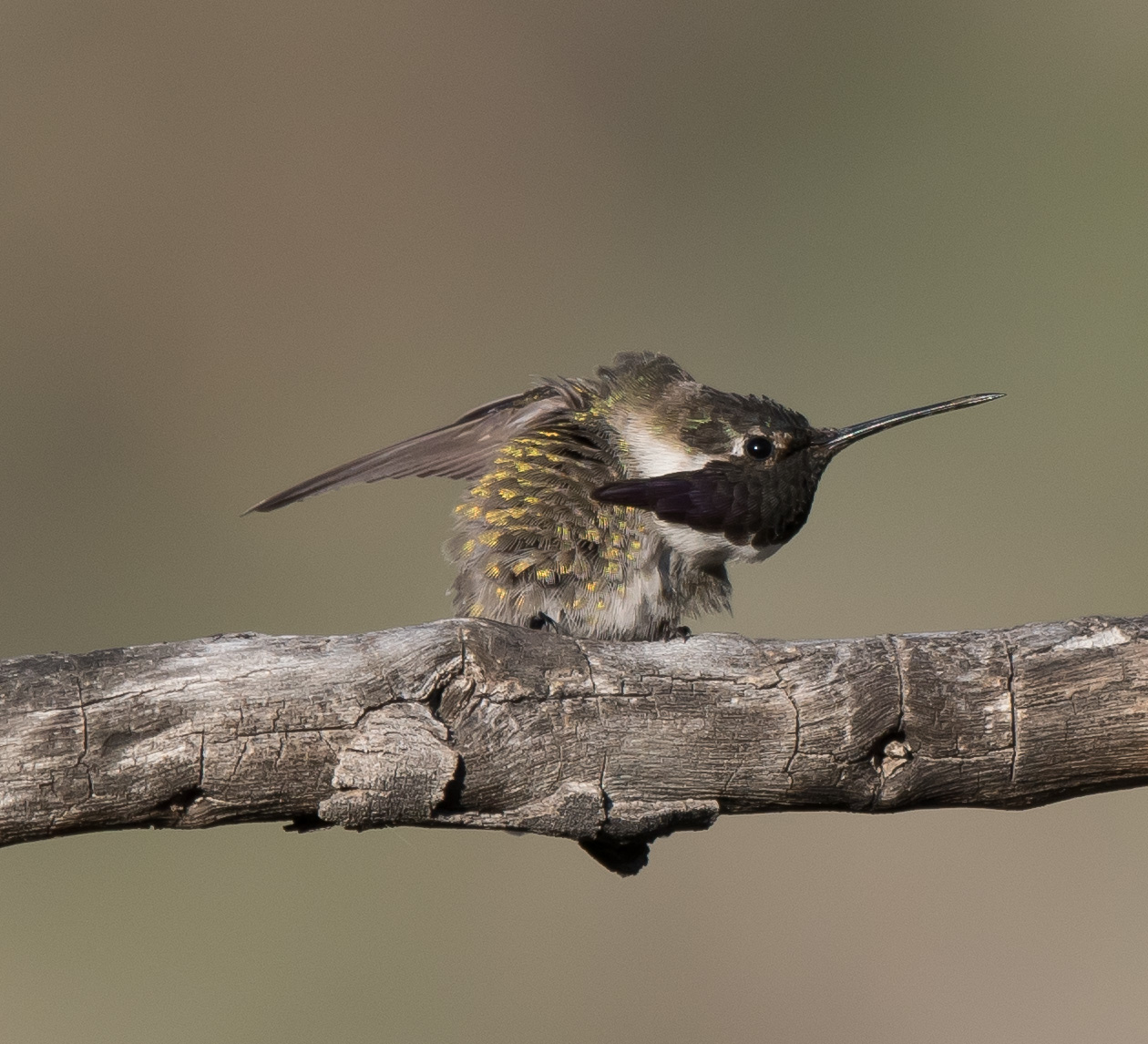Friday we were up early and had plans to search for another specialty bird, the Sinaloa Wren and Chris was joining us for the entire day on this trip. This is a bird that Chris and I had seen at Rancho El Aribabi in Mexico, twice, but photos were difficult as this bird is very secretive. We also made a trip to Huachuca Canyon over a year ago to try for it without much luck. Chris had gotten a glimpse of it and I had heard its ratcheting call on that trip. Very disappointing to say the least. Jennifer and Peggy had never seen this bird, so it would be a life bird for both of them.
Huachuca Canyon is accessed only through a military base, Fort Huachuca and they are very cognizant of how much birders love to visit this canyon. They are very agreeable to allow birders to go exploring, and they have now installed a check-in system and with a proper photo ID, one will get placed in their data base and will be issued a 30 day pass to access Huachuca Canyon. After the initial check-in, it is easier to get a new pass on future visits. This was a process that took us about 20 minutes to complete, and was fairly easy, so it is nothing to keep one from going in. We went immediately to the location where this bird has been seen for almost 2 years. I am sure it is getting lonely and wondering why a female has not found it and its location for a nest. We knew it frequented the stream bed and loved the dense brush piles along the flowing water, but it is very secretive and not often seen. We split up and watched and waited for a while with no results. One other person was there when we arrived and he claimed to have heard it and saw it about 20 minutes before we arrived. Chris and I wandered down stream a bit further and found a spot that looked good for it and we stood there for about 15 minutes, when suddenly, we saw a movement in the brush pile of a bird that darted out in the shade and then back in for a split second. Adrenalin just kicked up a notch for both of us! We wanted to make sure it was the Sinaloa Wren and not a Bewick's Wren, and a couple of minutes later it popped out into the opening once more. A quick photo and confirmation got me quickly running back to get the girls to join us.
What happened next was utterly astounding, this shy little bird, started to put on a show for us. At first, it started coming out but staying undercover in the brush and grasses occasionally popping its head out for us.
Eventually, it came out and perched on a small twig and sat there in the light and just took its time and looked both, right and left, multiple times while our cameras clicked away. By this time the other person that was there earlier had found his way down to where we were and he also got to see it well. Another young couple had showed up and they too, knew that we were on it and they came in behind us to get in on the show. At one point, it almost looked like it was resting and relaxing; may have been the clicking of the cameras. Good example of where persistence pays off. I finally got some great photos of a rare US bird as did Chris, and Jen and Peggy got a new life bird, which is hard for them as their lists are very high already. So glad to be a part of the special occasion!
After this success, and since we were on Cloud 9, we decided to head to the Patagonia area to see what we could find. The stop at the Paton House was quite good, but we really missed our good friend, Larry Morgan, who has been the host for this place for the last couple of years. He was Mr Congeniality for that place and everyone that visited, left with a great experience. In the process, I captured some photos of a Bewick's Wren, a Green-tailed Towhee, and an Inca Dove.
Bewick's Wren
Green-tailed Towhee
Inca Dove
And a quick short stop in downtown Patagonia, resulted in an Anna's Hummingbird, which was already nesting. Note the nest well disguised on the top of a pine cone in the first photo and the female Anna's Hummingbird on it in the second photo.
Anna's Humingbird nest on the top of a pine cone.
Anna's Hummingbird
Since our day was getting shorter and we wanted to get to Madera Canyon with some daylight left, we headed in that direction so we could arrive in time to get some birds before calling it a day. Santa Rita Lodge has an awesome set up for birders. Very relaxing where one can enjoy the many birds that come to visit the feeders. We had a total of 4 species of hummingbirds at Santa Rita Lodge. In addition to Anna's and Broad-billed Hummingbirds, we also had the first of the season, Rufous and a Magnificent Hummingbird.
Magnificent Hummingbird
Rufous Hummingbird
A couple of the stars of the show were a male and a female Arizona Woodpecker along with the regular Mexican Jays and the always classy looking Yellow-eyed Junco.
Arizona Woodpecker - Male
Arizona Woodpecker - Female
Mexican Jay
Yellow-eyed Junco
We also got a 'lifer' butterfly on this day, an Arizona Powdered Skipper.
Before we knew it, it was time to head back to the Phoenix area and we had to bid adieu to Chris. It was a remarkable day with some really great birds and the icing on the cake was the Sinaloa Wren.




































































